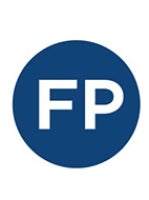Why Lost Profits Matter
When businesses end up in court, damages are often front and center. One of the most critical and complex types of damages is ‘lost profits.’ Lost profits represent missed opportunities, broken contracts, and the economic fallout of wrongful conduct. Whether you’re a litigator, business owner, or valuation expert, understanding how lost profits are calculated and challenged is key.
As William Marra of Certum Group puts it: “A lot of times lawyers and claimants focus on just the liability, but you need to think about what are the damages? And can I collect those damages at the end of the day?”
What Are Lost Profits, Really?
Lost profits are a type of compensatory damages intended to make the injured party whole by putting them in the financial position they would’ve been in but for the wrongful act. These profits are distinct from other damages like punitive damages or nominal damages.
The plaintiff must show that the defendant’s conduct directly caused the loss, and that the amount of the loss can be calculated with ‘reasonable certainty.’ This last part, reasonable certainty, is both the goal and the battleground.
Common Legal Contexts for Lost Profit Claims
Lost profit claims can arise in a wide variety of commercial cases, including breach of contract, trade secret misappropriation, patent or copyright infringement, business interruption, unfair competition, or tortious interference.
Marra notes that most causes of action tend to allow for pretty robust recovery of lost profits, but underscores the importance of checking the statute and the contract.
Many contracts contain limitations or waivers on lost profit recovery. These clauses can be enforceable, though often courts carve out exceptions for willful misconduct.
The Core Legal Standard: ‘Reasonable Certainty’
The phrase ‘reasonable certainty’ appears again and again in case law. But what does it mean?
Barry Kaltenbach of Miller Canfield explains that reasonable certainty is not mathematical certainty. It has to have a reasonable basis, but it doesn’t need to be proven to the penny.
Megan Becwar of Dispute Economics concurs noting that “Lost profits have to be proved to a reasonable degree, but not with entire certainty.”
In practice, courts expect damages experts to use reliable methodologies and data and not guesswork. New businesses, which lack historical performance data, face a tougher challenge, but the outdated rule that ‘new businesses can’t claim lost profits’ has been discarded in many jurisdictions.
As Kaltenbach puts it, “You always have to prove that you would have suffered a loss. Then you have a little bit more flexibility to try to model what that profit is.”
Key Valuation Approaches
There are four primary approaches used to calculate lost profits, each with strengths and weaknesses.
- Before-and-After Approach
This method compares a company’s performance before the alleged harm to its performance after. It’s often used when reliable historical data is available.
- Yardstick Approach
Here, the expert compares the plaintiff to similar businesses that weren’t affected by the damaging event. This is particularly useful for startups and new businesses and requires access to reliable benchmark data.
- Market Share Approach
This model assesses the change in a business’s market share due to the defendant’s actions. This approach is particularly helpful when market data is robust, but can be hard to apply in niche or fragmented industries.
- Sales Projection Approach
This approach uses internal forecasts or contracts to estimate what sales would have been absent the harm. This can be a precise approach when based on existing contracts or orders, but can appear self-serving if unsupported by outside validation.
Building a Solid Expert Opinion
Expert witnesses play a critical role in these cases, but they need to follow clear rules. Depending on the jurisdiction, expert testimony must meet either the ‘Frye standard’ (general acceptance) or the ‘Daubert standard’ (relevance and reliability).
Experts must disclose the methods and data they rely on and avoid straying into legal opinions. Courts want to see:
- Clear connection between the wrongful act and the damages
- Supportable financial assumptions
- Consideration of other factors that might have caused the loss
Challenges and Pitfalls in Lost Profit Claims
Overstating the Loss Period
You can’t claim profits forever. Courts expect the ‘loss period’ to align with contract terms, business cycles, or return to normal profitability.
Ignoring Mitigation
Plaintiffs are expected to minimize damages where possible. If they fail to mitigate, it could reduce their claim.
Using Unvetted Projections
A robust analysis involves challenging the assumptions, revising estimates, and stress-testing the math.
The Art and Science of Proving Lost Profits
Valuing lost profits is part accounting, part economics, part law, and entirely high stakes. A successful claim doesn’t just involve showing you were wronged. It involves credible, defensible, and thoroughly explained financial analysis.
To learn more about this topic, view Valuing Lost Profits for Litigation Purposes. The quoted remarks referenced in this article were made either during this webinar or shortly thereafter during post-webinar interviews with the panelists. Readers may also be interested to read other articles about litigation.
This article was originally published here.
©2025. DailyDACTM, LLC, d/b/a/ Financial PoiseTM. This article is subject to the disclaimers found here.




 />i
/>i
